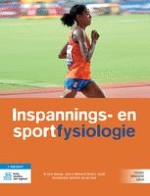Introductie
Op 14 oktober 2012 vestigde de Oostenrijker Felix Baumgartner verschillende wereldrecords voor skydiving. Op die dag ging Baumgartner met een heliumballon de stratosfeer in naar een hoogte van 39 km (een hoogterecord voor ballons), waarna hij de ballon verliet en vanaf die hoogte naar de aarde sprong (een hoogterecord voor parachutespringen). Daarbij werd hij de eerste mens die de geluidsbarrière doorbrak buiten een voertuig, door een snelheid van 1.343 km/u te bereiken tijdens een vrije val van 4 minuten en 19 seconden.
Op zulke hoogten zou, zonder een drukpak en ademhalingsapparatuur, Baumgartners lichaam niet in staat zijn geweest om zuurstof te leveren aan zijn weefsels en zou hij het bewustzijn snel hebben verloren. Zijn speciale pak was ook gemaakt om hem te beschermen tegen de lage omgevingsdruk, de extreme kou (−52 °C), wrijving en andere gevaren. Had het pak niet goed gewerkt, dan zou hij boven de 19,2 km de fatale aandoening gasembolie hebben gekregen, de vorming van gasbellen in zijn lichaamsvloeistoffen.
Maar alles ging volgens plan en hij opende zonder problemen zijn parachute en landde veilig in de woestijn van New Mexico. Felix Baumgartner liet bij het overwinnen van de gevaren van deze grote hoogte niet alleen een bijzondere menselijke prestatie zien, maar ook de kracht van technologie.
